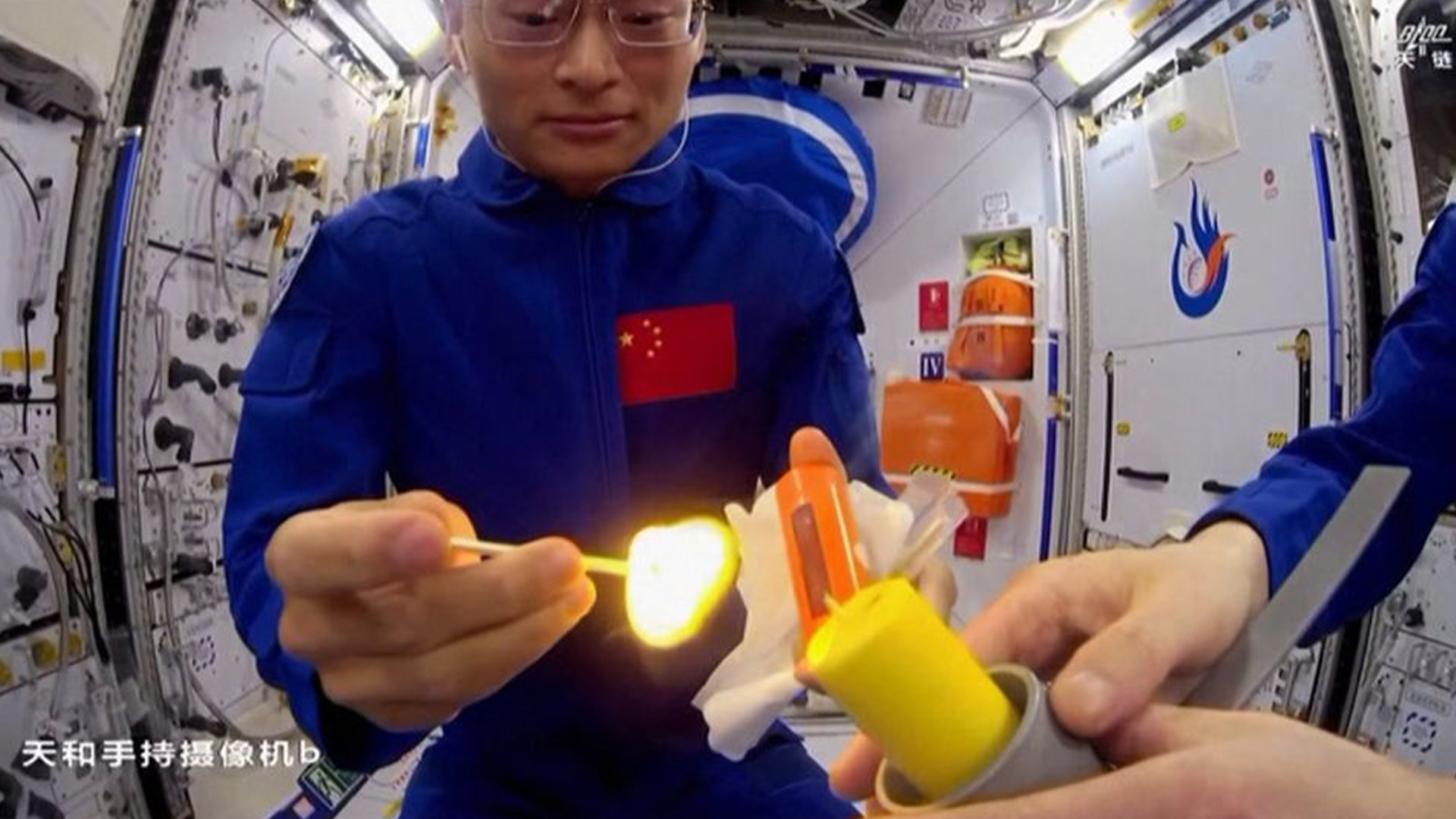Watch Chinese astronauts light a spherical fire in risky open-flame experiment on Tiangong space station
Chinese astronauts lit a match while filming a lecture aboard the Tiangong Space Station, creating a spherical open flame that would be forbidden aboard the ISS.
China's Shenzhou 16 astronauts conducted an eye-raising experiment in space involving open flames aboard the Tiangong space station.
Astronauts Gui Haichao and Zhu Yangzhu lit a candle during a live lecture broadcast from China's Tiangong space station on Sept. 21 to demonstrate how flames burn in microgravity. Strikingly, the flames appear nearly spherical, rather than the teardrop-shaped flames we're familiar with back on Earth.
Lit candles on Earth produce flames shaped through buoyancy-driven convection, with hot air rising and cold air descending. That combustion convection current is weak in the microgravity environment of low Earth orbit, however. This means flames diffuse in all directions, resulting in spherical fireballs.
The livestreamed lecture was the fourth so-called "Tiangong classroom" hosted on China's space station. The astronauts interacted with students in five classrooms across China, demonstrating a number of microgravity phenomena. As with previous classrooms, the astronauts demonstrated that many physical processes behave differently than they do on Earth.
However the candle experiment — in which Gui strikes a match to produce an open flame to light the candle — would likely be met by surprise by International Space Station participants, who have strict rules regarding flammable materials and open flames.
I made this - that time ESA astronaut @Astro_Alex made Mission Control think he might have snuck an actual candle onto @Space_Station. It's amazing what you can do with an old penlight and some spare metallic tape: https://t.co/5UvfA1kC8j pic.twitter.com/TFlHX42YOpMarch 9, 2021
Strict fire safety measures aboard the ISS are in part a response to a significant fire on the Russian space station Mir in in 1997.
Combustion in microgravity has been the subject of numerous experiments on the ISS, but usually using a specially-designed combustion integrated rack, keeping fire isolated and contained.
Get the world’s most fascinating discoveries delivered straight to your inbox.
Tiangong also has its Combustion Experiment Rack (CER) for serious research in this area.
Originally posted on Space.com.

Andrew is a freelance space journalist with a focus on reporting on China's rapidly growing space sector. He began writing for Live Science sister site Space.com in 2019, and he also writes for SpaceNews, IEEE Spectrum, National Geographic, Sky & Telescope, New Scientist and others. Andrew first caught the space bug when, as a youngster, he saw Voyager images of other worlds in our solar system for the first time. Away from space, Andrew enjoys trail running in the forests of Finland.




